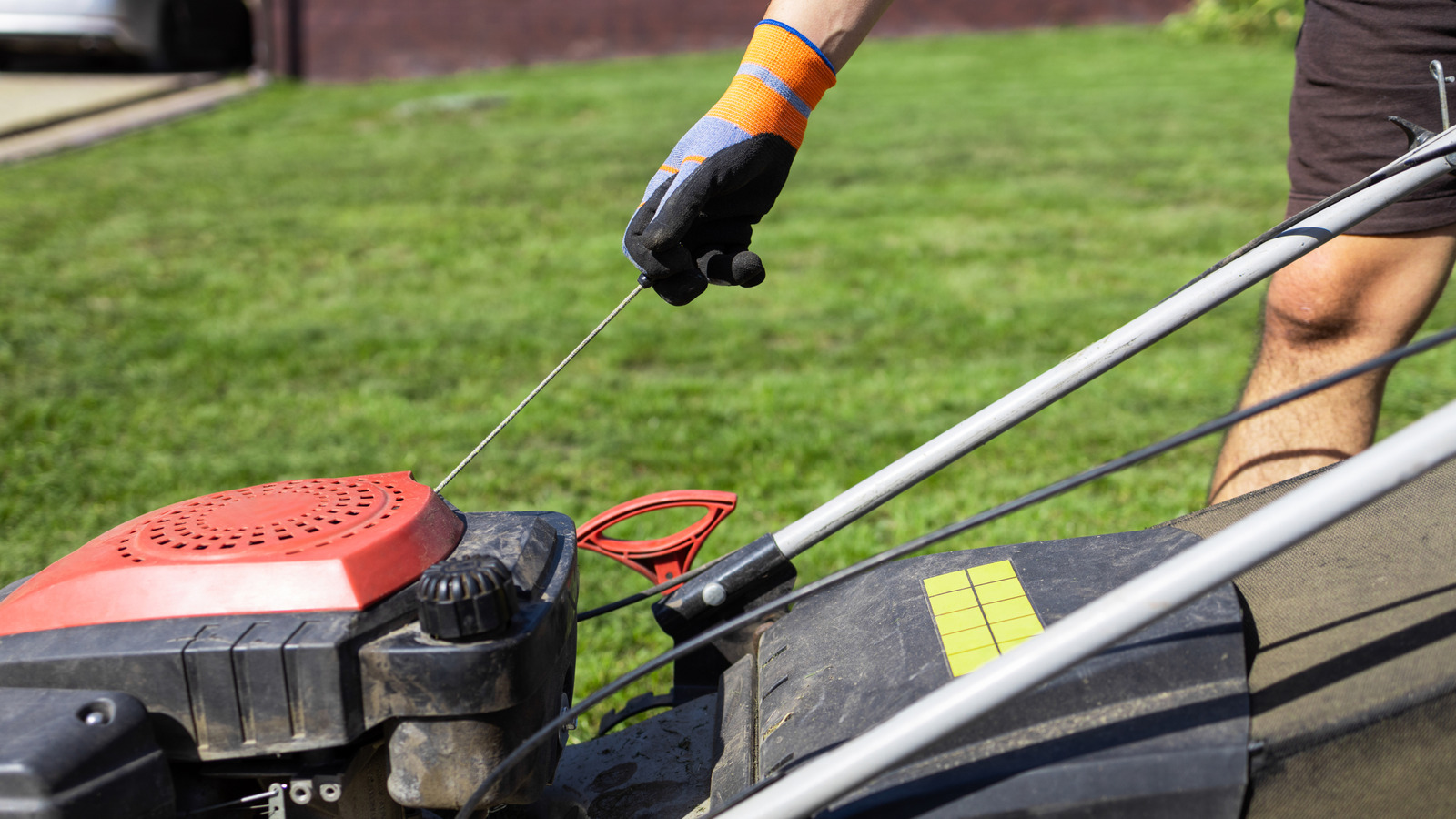
If you're a homeowner with a lawn, you want to keep it looking good. A big part of lawn upkeep is cutting the grass. While many people hire a professional to handle landscaping, if your grass becomes unwieldy between visits, you might take matters into your own hands and cut it yourself.
Cutting the grass typically doesn't rank as one of the most difficult things to do as a homeowner; however, as with anything, things occasionally go wrong. One of those things is a pull cord, also known as a starter rope, getting stuck. If you mow your own yard, sooner or later, you'll likely go through this familiar experience: you try to start your mower, but the pull cord just won't budge.
You tug on it again, and nothing. When the pull cord is working properly, it should extend a few feet without any problems, allowing the recoil spring to fully engage and start the engine. However, when it's stuck, you may only be able to extend it a few inches because the spring isn't tightening enough to turn over the motor.
Owning one of the most reliable push lawn mowers ever built won't necessarily save you from this frustrating problem because even they can face issues like debris blocking the blade or a jammed recoil starter mechanism. While repairing a stuck pull cord might seem like a job for a professional, many of the causes can be fixed with a DIY approach. While it would be nice if we only had to contend with grass when mowing our lawns, the reality is that there's a lot of other stuff lurking in our yards—like rocks, sticks, and weeds—that can cause problems for our mowers if they get stuck in the blades.
This build-up can block the underside of the mower and jam the blades, keeping them from turning as they should. It's a good idea to wear gloves to protect your hands as you work. Follow these steps to check to see if debris is blocking the blade: If your mower's pull cord still isn't working after going through these steps, you might be dealing with a mildly seized engine.
You can often fix this problem by gently rocking the blades while the spark plug is disconnected. Your lawn mower's moving parts must be adequately lubricated to keep them functioning as they should. If you checked the blades and didn't find anything blocking them, the problem might be that friction is causing your pull cord to get stuck on dried-out older parts.
A quick yet effective fix is spraying a light, high-quality lubricant like WD-40 on the cord. The recoil starter mechanism is one of your lawn mower's most important components, and it's what makes it possible for you to start the engine with just a tug of that cord. Even the most powerful lawn mowers can experience this problem, which is often caused when the recoil spring gets jammed, which can prevent the cord from retracting or extending correctly.
The more you use the pull cord, the more likely it'll get tangled up in the recoil starter mechanism. Pulling too hard, pulling at an angle, or lack of lubrication in the recoil starter mechanism can all contribute to this issue. Whatever the cause, when this happens, you won't be able to pull the cord, so you'll need to check your mower's recoil starter mechanism.
Follow these steps to check your mower's recoil starter mechanism: If you discover the cord is broken when you open the plastic cover, you'll need to buy a replacement cord. To prevent this from happening in the future, be sure to regularly clean and lubricate the recoil starter mechanism and periodically check it to make sure it hasn't become twisted or tangled. Your lawn mower's pull cord gets a lot of use, and like anything, it will wear out over time.
The repeated pulling motion can cause the cord to fray, snap, or get tangled in the starter housing, keeping it from retracting and extending properly. When this happens, there's only one solution — getting a new cord. However, before buying a new pull cord, you'll want to inspect the one you have to make sure it's the source of the problem.
Follow these steps to inspect your lawn mower's pull cord: If you inspect the cord and notice signs of wear and tear, your best bet is to replace it entirely. However, if it's tangled, you can try to carefully straighten it out and rewind it around the pulley. You can help extend the life of your pull cord by avoiding yanking it too hard and cleaning it regularly.
If you store your lawn mower on its side or tilt it the wrong way, it might experience hydro-locking, also known as a hydro-locked engine. When this happens, oil gets into the engine's cylinder or pools in the spark plug, stopping the engine from turning, locking the pull cord, and making it impossible to start the mower. You'll need to remove the mower's sparkplug and check the end for dampness to figure out if hydro-locking is causing the pull cord problem.
If the end of the sparkplug is damp, you're dealing with hydro-locking. Follow these steps to fix a hydro-locked spark plug: Once you restart the engine, you might see white smoke coming from the muffler as the engine burns off any remaining oil. After the oil is fully cleared, the mower should operate normally.
.










